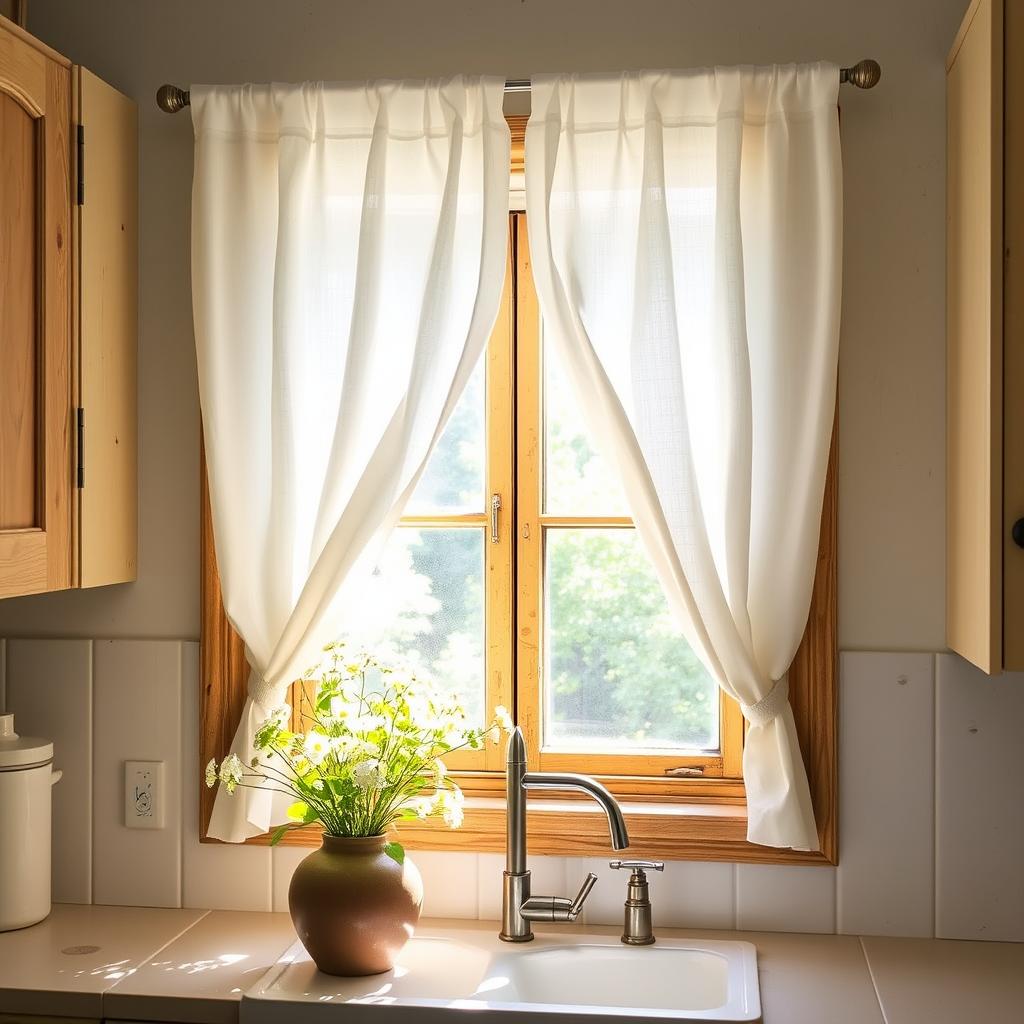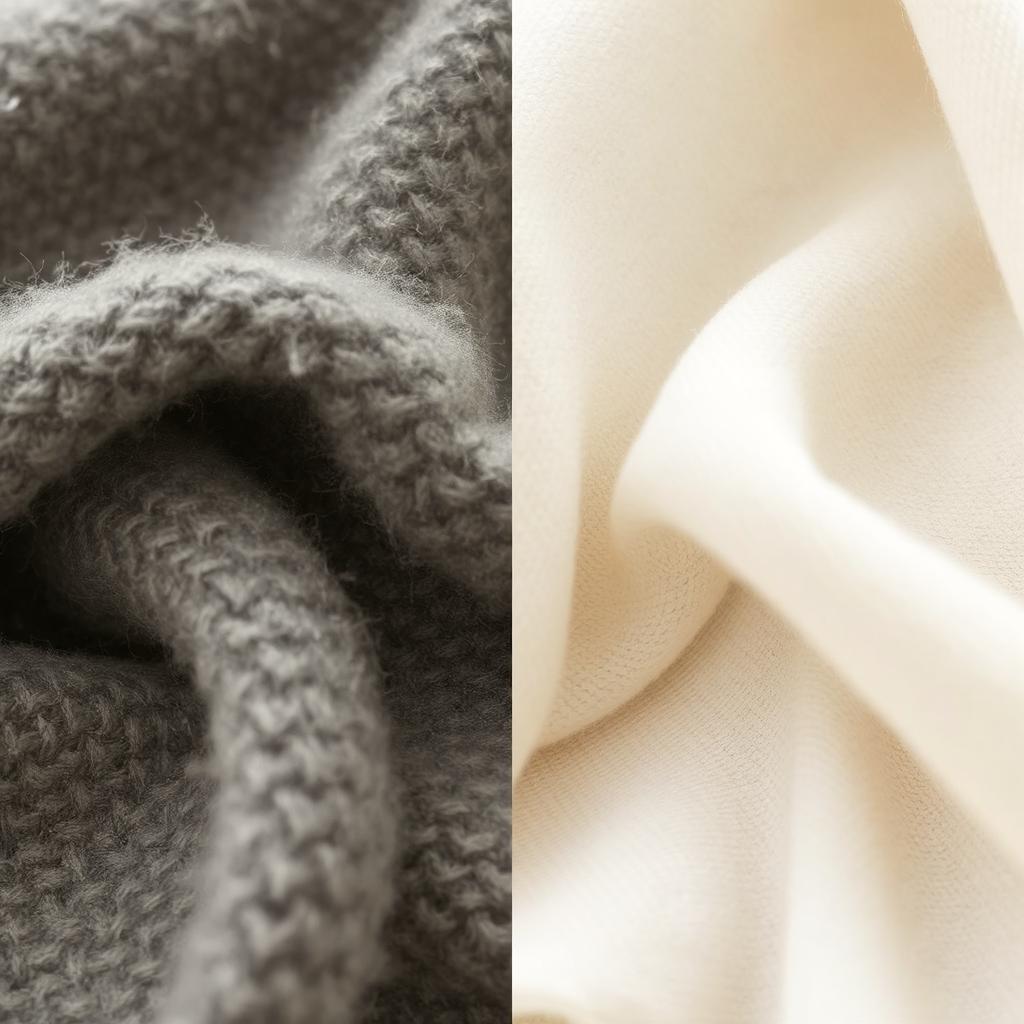Linen curtains have become a popular choice for homeowners seeking a blend of elegance, comfort, and natural beauty. Made from flax fibers, they offer a breathable, eco-friendly option for window treatments. Their soft texture and neutral tones make them versatile for various decor styles, from modern minimalism to rustic charm. However, linen curtains also have some drawbacks, such as being prone to wrinkling and requiring delicate care. If you’re wondering whether linen curtains are the right fit for your space, this detailed guide breaks down the linen curtains pros and cons to help you make an informed decision.
Pros of Linen Curtains
Linen curtains offer several advantages that make them a stylish and functional choice for many homes. Here’s a closer look at their benefits:
- Natural and Eco-Friendly: Linen is made from flax fibers, which are both sustainable and biodegradable. It requires less water and pesticides compared to cotton, making it a great choice for eco-conscious homeowners. If you prioritize environmentally friendly decor, linen curtains align perfectly with that lifestyle.
- Elegant and Timeless Look: Linen’s slightly textured appearance adds sophistication and warmth to any room. Its neutral tones work well with a wide range of decor styles, from modern minimalism to farmhouse aesthetics. Linen curtains often exude a relaxed, effortless elegance.
- Breathable and Lightweight: Linen allows light and air to pass through, creating a bright and airy atmosphere while still offering a sense of privacy. This quality makes them ideal for living areas where you want a balance between natural light and seclusion.
- Durable with Proper Care: High-quality linen curtains are known for their longevity. They resist pilling and can become even softer and more appealing with age. When cared for properly, they can be a long-term investment for your home.
These benefits and drawbacks of linen curtains will help you understand their full potential in your space.

Cons of Linen Curtains
While linen curtains offer plenty of benefits, they also come with some drawbacks to consider:
- Prone to Wrinkling: Linen’s natural texture means it can wrinkle easily. If you prefer a crisp, formal look, the wrinkled appearance might feel too casual or untidy. Regular steaming or ironing can help maintain a neater appearance.
- Requires Special Care: Linen curtains often need more attention than synthetic fabrics. They typically require dry cleaning or gentle hand washing to preserve their texture and prevent shrinkage. Some modern linen blends, however, are easier to care for.
- Less Effective at Blocking Light: If you need full blackout curtains, linen might not be the best choice. While they do filter natural light beautifully, they are not ideal for bedrooms where complete darkness is desired without additional layers.
- Higher Price Point: Compared to synthetic fabrics like polyester, linen tends to be pricier due to the natural fibers and craftsmanship involved in its production. However, the elegance and durability often justify the investment.
By understanding these linen curtains pros and cons, you can weigh the aesthetic value against practicality.
Linen Curtains Pros and Cons
| Pros ✅ | Cons ❌ |
|---|---|
| Natural and eco-friendly, made from sustainable flax fibers. | Prone to wrinkling and requires regular maintenance. |
| Elegant and timeless look, suitable for various decor styles. | Requires special care such as handwashing or dry cleaning. |
| Breathable and lightweight, allowing natural light and air flow. | Less effective at blocking light compared to blackout curtains. |
| Durable and becomes softer over time with proper care. | Higher price point compared to synthetic fabrics. |
Linen Curtains Pros and Cons for Specific Spaces
Linen curtains can work beautifully in different rooms, but their suitability varies based on functionality and style preferences. Here’s a breakdown:

Linen Curtains in Bedrooms
- Pros: Creates a soft, cozy atmosphere with gentle light filtering. Ideal for a relaxed, serene vibe.
- Cons: Limited privacy due to light filtering and less effective for complete darkness.
- Best Use: Layer with blackout blinds for better light control and privacy.
Linen Curtains in Living Rooms
- Pros: Enhances the elegance of the space with its relaxed, airy appearance.
- Cons: Wrinkles might require occasional maintenance to keep the look fresh.
- Best Use: Perfect for creating a bright, welcoming environment.
Linen Curtains in Kitchens
- Pros: Light and breathable, perfect for smaller windows needing minimal coverage.
- Cons: Can stain easily, requiring regular cleaning.
- Best Use: Suitable for kitchen windows not directly exposed to cooking splashes.
Linen Curtains in Outdoor Spaces
- Pros: Visually appealing and perfect for covered patios or sunrooms.
- Cons: Not weather-resistant and prone to fading under direct sunlight.
- Best Use: Ideal for semi-covered areas with minimal direct weather exposure.
Linen Curtains in Energy Efficiency
- Pros: Provides mild insulation, helping regulate indoor temperature naturally.
- Cons: Not as effective as specialized thermal curtains for extreme weather control.
- Best Use: Suitable for mild climate control in moderate seasons.

Linen Curtains vs. Other Curtain Materials
To help you decide better, here’s a quick comparison between linen and other common curtain materials:
Linen vs. Cotton curtains
Linen has a more textured, organic feel, while cotton offers a smoother, casual look. Both are breathable but linen has a more luxurious appeal.
Linen and cotton are both popular fabric choices, but they have some key differences. Linen has a more textured, organic feel, giving it a relaxed yet elegant look. In contrast, cotton feels smoother and softer, making it great for a more casual and cozy vibe.
Both fabrics are breathable and comfortable, perfect for warm weather. However, linen has a more luxurious and sophisticated appeal, often seen in high-end decor. Cotton, on the other hand, is easier to maintain, as it wrinkles less and is generally more affordable.
If you love a natural, rustic charm, linen is a great choice. But if you prefer a softer, fuss-free fabric, cotton curtains might be the better option! 😊
For Detailed Comparison: Cotton vs. Linen Curtains: Which Fabric is Best for Your Home?
Linen vs. Polyester:
Polyester Curtains is budget-friendly and wrinkle-resistant but lacks the organic beauty and eco-friendliness of linen.
Linen and polyester are quite different in terms of look, feel, and durability. Linen is a natural fabric with a textured, organic beauty, while polyester is synthetic, offering a smooth and uniform appearance.
One big advantage of polyester is that it’s budget-friendly and wrinkle-resistant, making it a low-maintenance option for busy households. In contrast, linen tends to wrinkle easily but has a timeless, elegant charm that many people love.
When it comes to eco-friendliness, linen is the clear winner since it’s made from natural flax fibers and is biodegradable. Polyester, however, is more durable and resistant to wear and tear, making it a practical choice for high-traffic areas.
If you’re looking for affordable and easy-care curtains, polyester might be the way to go. But if you love natural textures and sustainability, linen is a better choice! 😊
Linen vs. Silk:
Silk Curtains provides a luxurious, formal appearance but is even more delicate and expensive than linen.
Linen and silk are both elegant fabrics, but they have very different looks and feel. Silk is known for its smooth, shiny finish, giving any space a luxurious and formal touch. Linen, on the other hand, has a soft, textured appearance that feels more relaxed and natural.
While both fabrics add sophistication, silk is more delicate and requires extra care, including dry cleaning and gentle handling. Linen is more durable and easier to maintain, making it a practical choice for everyday use.
When it comes to price, silk is much more expensive due to its fine craftsmanship and delicate fibers. Linen is also considered a premium fabric, but it’s more affordable and long-lasting compared to silk.
If you love a rich, elegant look, silk is a great option, but if you prefer a natural, timeless charm with less maintenance, linen might be the better choice! 😊
Considering these pros and cons of linen curtains, they are ideal for those seeking a natural, elegant look with a breathable texture.
FAQs related to Linen curtains pros and cons:
What are the benefits of linen curtains?
Linen curtains are breathable, eco-friendly, and offer a natural, elegant look. They regulate temperature by allowing airflow and providing insulation, which makes them ideal for both summer and winter. Additionally, linen has a textured, luxurious appeal that enhances any room’s aesthetic.
Do linen curtains wrinkle easily?
Yes, linen curtains tend to wrinkle easily due to the natural fibers of the material. However, some people appreciate the relaxed, lived-in look wrinkles offer. To minimize wrinkles, opt for linen blends or regularly steam the curtains to maintain a smoother appearance.
Are linen curtains durable?
Linen curtains are highly durable, as linen fibers are stronger than cotton. They can last for years with proper care. However, over time, they may soften and age gracefully, which adds to their charm. Regular washing and gentle handling help maintain their longevity.
Do linen curtains block out light?
Linen curtains generally offer light filtering properties rather than full blackout. While they can reduce glare and soften sunlight, they don’t provide complete privacy or block light completely. To enhance light-blocking, consider layering them with a darker fabric or using blackout liners.
Are linen curtains easy to maintain?
Linen curtains require a bit more care compared to synthetic fabrics. They need to be washed gently, either by hand or on a delicate cycle, to prevent shrinkage or damage. Ironing is also recommended to smooth out wrinkles and maintain their crisp appearance.
Are linen curtains suitable for all seasons?
Yes, linen curtains are suitable for both summer and winter. The fabric is breathable and moisture-wicking, making it perfect for warmer months. In cooler weather, linen provides insulation, keeping rooms warm. They are versatile, making them a year-round option for most climates.
Do linen curtains fade over time?
Yes, linen curtains may fade slightly over time, especially when exposed to direct sunlight. To reduce fading, consider using window treatments or blinds to shield them from prolonged sun exposure. Regular washing and proper storage can also help preserve their color and texture.
Can I use linen curtains in a bathroom?
Linen curtains can be used in bathrooms, but they may not be as moisture-resistant as synthetic fabrics. If you choose linen for a bathroom, ensure proper ventilation to prevent mold and mildew growth. Regular washing is essential to maintain cleanliness and freshness.
Are linen curtains eco-friendly?
Yes, linen curtains are considered eco-friendly because linen is made from flax, a plant that requires fewer pesticides and water than cotton. It is also biodegradable and renewable, making it a sustainable choice for those who prioritize environmentally conscious products.
Are linen curtains expensive?
Linen curtains can be more expensive than cotton or polyester due to the labor-intensive process of making linen. The quality of the fabric, the weight, and brand can influence the price. However, linen’s durability and timeless appeal often make it a worthwhile investment for long-term use.
Conclusion
Linen curtains are a beautiful addition to any home, offering a perfect balance of elegance and functionality. While they come with a few drawbacks like wrinkling and light filtering issues, their timeless appeal and eco-friendliness make them worth considering.
To recap, the advantages and disadvantages of linen curtains depend on the space and your personal style preferences. If you’re looking for a curtain material that adds charm while being sustainable, linen could be the perfect choice.
Ready to explore linen curtains for your home? Share your thoughts or experiences with linen curtains in the comments below!



